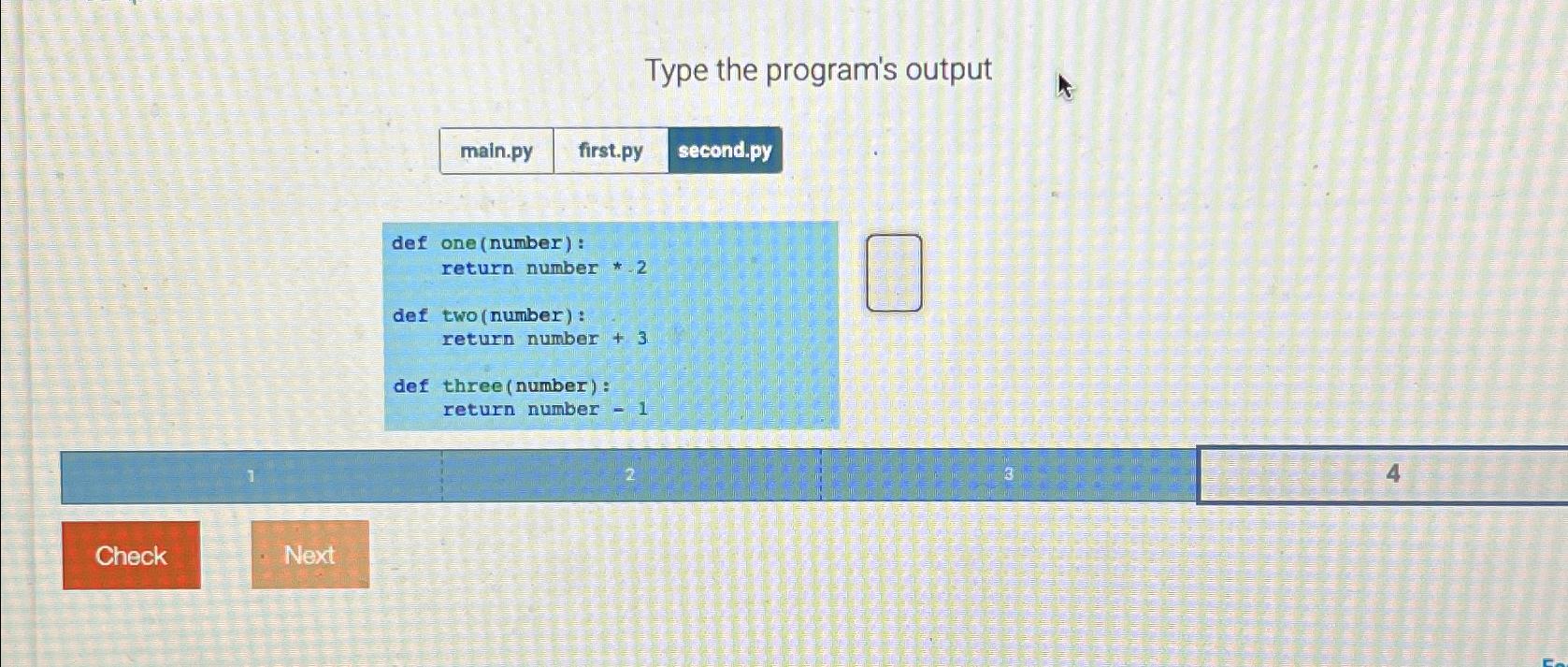Answered step by step
Verified Expert Solution
Question
1 Approved Answer
Jump to level 1 Type the program's output table [ [ , second.py ] ] import first def one ( number ) : return
Jump to level
Type the program's output
tablesecond.py
import first
def one number :
return number
def twonumber:
return number
def three number :
return one number twonumber
printthree
printfirstthree
printfirst four
Next
Type the program's output
import second
def one number:
return number
def twonumber:
return number
def threenumber:
return one number twonumber
def fournumber:
return second. three number
table
Feedback?
CHALLENGE
Type the program's output
tablemainpyfirst.py
def one number:
return number
def twonumber:
return number
def three number:
return number

Step by Step Solution
There are 3 Steps involved in it
Step: 1

Get Instant Access to Expert-Tailored Solutions
See step-by-step solutions with expert insights and AI powered tools for academic success
Step: 2

Step: 3

Ace Your Homework with AI
Get the answers you need in no time with our AI-driven, step-by-step assistance
Get Started


